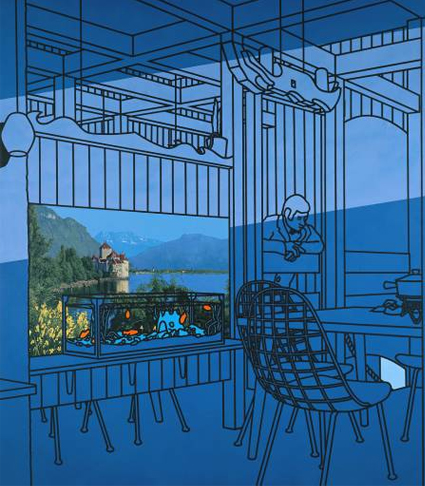PATRICK Caulfield is, among other things, the world's greatest painter of the pretentiousness of cheap restaurants. He is a subtle and affectionate student of their peculiarities, the ways in which their feeble attempts to evoke foreignness - the odd framed photograph of an exotic location, say, or a majolica plate marooned on an expanse of wall - are sabotaged by the grim realities of textured Vymura paint finish or geometrically patterned wallpaper circa 1973. Caulfield has always been intrigued by the banal artifice of a certain sort of urban interior and has made its incongruities part of the fabric of his art.
Town and Country, a painting of 1979, looks like a key work in the context of ''Patrick Caulfield 1963-1992'', at the Serpentine Gallery, a smaller but more impressive and thoughtfully displayed survey of his art than the one held at the Tate 11 years ago. Town and Country is a wonderful comment on the ludicrousness of one form of urban pastoralism, this painting of a cheap salad bar with its fake woodgrain-effect vinyl surfaces and haywire wallpaper and cheap pseudo-Pointillist carpet leading to a view of what you imagine for a millisecond might be a real landscape outside. But the autumnal trees you see are as unreal as everything else in the interior, and are part of it. Painted in a blurred, dreamy style which is the fine art equivalent to vaseline on the camera lens, this is an ingenious simulation of a fake landscape photo-printed on to a plastic-laminated wall.
The funny thing is that Caulfield's painting does not, itself, give the impression of an artist merely sneering at the kind of place he has taken for his subject. A kind of love is present here, manifest in the painstaking precision that has gone into...

False finish
01-12-1992

